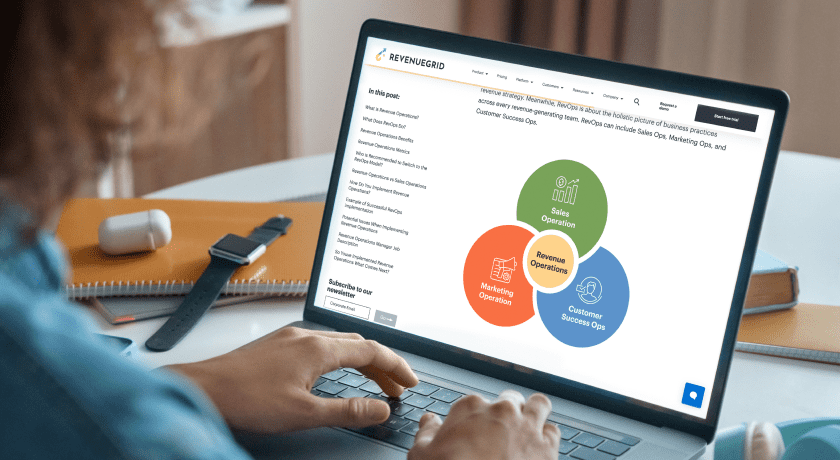Revenue operations (RevOps) is a crucial part of many businesses, whether you’re operating in retail, hospital, finance, or technology. RevOps is a revenue operations strategy that aligns teams, processes, and technologies to maximize revenue growth and efficiency. Once you have it in place, you’ll see how it’ll help streamline your process, increase revenue, and boost employee productivity.
If you’re thinking about investing RevOps, check out this article to learn how you can get started with it.
Why You Should Invest in RevOps
Revenue operations is a business function that has the power to change the way your company does business. It ensures every of your staff will do their job effectively and efficiently.
By investing in RevOps, you can:
- break down silos between departments and teams.
- align apartments with your business goals and objectives.
- increase revenue by streamlining work processes and focusing on the right metrics.
RevOps Best Practices
1. Understand The Current State of Your Business
The first step when it comes to revenue operations best practices is to understand the current status of your business.
What are the top revenue drivers for your company? Are there any areas for improvement? How do you stack up against your competition? You’ll want to look at all aspects of your business, from marketing to sales to customer service.

The goal is to identify opportunities for enhancement, including areas where you’re already doing well and those where there’s room for growth, as well as any challenges or limitations that might be holding back progress. This can help inform decisions about future investments in resources so that you can put yourself in the best possible position for success.
2. Get All teams in on Data
Get all departments on board with using the same tools for collecting data. If they’re using different software or databases, they won’t be able to share information across teams or departments easily.
Then, once everyone’s using a central source of truth for data, ensure they understand the value of data and how to use it right. Communicate regularly about why data analysis matters and how it can help them work smarter. If they struggle with collecting or analyzing data correctly, offer training sessions or workshops.
With a unified view of your business, everyone can work together to achieve higher performance.
3. Align All Departments
Companies that are serious about revenue operations have to make sure that every department is aligned with each other. From sales to marketing to customer support to operations and finance, everyone has to be on board with the company’s objectives for RevOps.

For example, sales and marketing teams have a lot of work to do—they need to understand their audience, build a robust database, and find new ways to reach them. But they also need to know what’s happening in the rest of your company: How is revenue being driven by other teams? What are their goals and metrics? How can they help each other succeed?
Or, the revenue operations team should be responsible for gathering information from sales and marketing to keep everyone on track with their goals. They’ll also work together with other teams to develop new strategies for generating revenue that will help the whole company grow in tandem.
By aligning all departments on common goals, you can ensure each department is working together toward a greater whole—and that each department understands how its contributions fit into the larger picture of your organization’s success.
4. Determine the Right Metrics
Metrics are measures of performance you can use to determine how well your revenue operations are performing.
There are three main types of key metrics:
- Performance metrics measure how well a company is doing in terms of its overall performance. This can include metrics like sales volume or profit margin.
- Customer service metrics measure customer satisfaction with a company’s products or services. This could include metrics like response time, CSATs, and Net Promoter Score.
- Process management metrics measure how well an organization performs in carrying out its business processes (e.g., sales lead generation).
5. Build a RevOps Team
An effective RevOpts team should have at least one member specializing in data analysis and reporting. You should also consider hiring someone familiar with marketing principles to help identify trends and make recommendations based on those findings. The rest of the team should include individuals from each department (e.g., sales) to clearly understand how each area contributes toward reaching revenue goals.
Here are some best practices for building a revenue operations team:
- Decide what functions to include in the team and how many people will be on it.
- Determine the roles each person should play and what qualifications they need to have.
- Create job descriptions for each role on the team, including any specific responsibilities that come with it.
- Make sure everyone understands their role, how they fit into the overall goal of maximizing profits while minimizing costs, and how this relates back to their individual responsibilities within the context of those goals.
6. Use Revenue Operations Software
Revenue operations software like Revenue Grid can help your business apply the best practices in revenue operations. This software enables you to improve your processes, reduce errors, and ensure that your employees are doing everything they can to maximize revenue.
Revenue Grid also offers a comprehensive report that allows your teams to track real-time performance across all channels, which can help you identify where to focus your efforts.
Apart from that, Revenue Grid is designed to make your job easier by automating many of the tasks you do manually every day. It integrates seamlessly with other tools in your current tech stack, helping you get more done in less time without losing accuracy or precision.